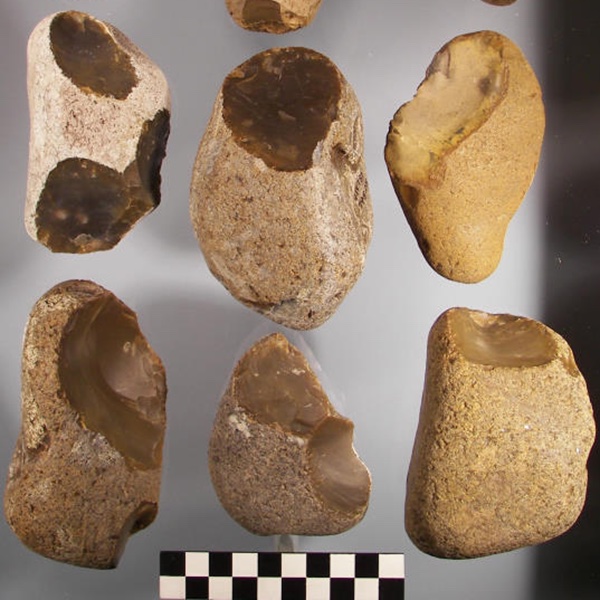Famous Rock Groups

Download lesson plan and included materials
Subject: Science
Grade: 5th and 6th
Author: Candice McQueen, revised by Mary Rodriguez (2023)
Time Duration: One 45-minute class period
Overview: Students will become familiar with the definitions of igneous, metamorphic, and sedimentary rock. Then, using rock identification books or online resource, students will work cooperatively to identify familiar rocks as igneous, metamorphic, or sedimentary. Additionally, students will use their knowledge of the three rock types to learn some of the rocks Native Americans would have found useful for making tools.
TEKS: Science, Grade 5
- (1E), collect observations and measurements as evidence
- (2B), analyze data by identifying any significant features, patterns, or sources of error
- (10B), model and describe the processes that led to the formation of sedimentary rocks and fossil fuels
Science, Grade 6
- (2C), collect and record data using the International System of Units (SI) and qualitative means such as labeled drawings, writing, and graphic organizers
- (2E), analyze data to formulate reasonable explanations, communicate valid conclusions supported by the data, and predict trends
- (10B), classify rocks as metamorphic, igneous, or sedimentary by the processes of their formation
Materials:
- A variety of different types of rocks (several for each small group of students)
- Rock Cycle drawing (included - can be copied for student handout or displayed to students)
- Rock Solid Evidence handout (2 pages, included)
- Teacher Information Sheet (included)
- Rock identification books or internet access to https://fog.ccsf.edu/kwiese/content/Classes/RockMineralGuide.pdf for each group of students.
Activities and Procedures:
Step 1: The teacher divides the class into groups. The teacher gives each group several rocks to examine.
Step 2: Students carefully handle rocks and fill out the Rock Solid Evidence handout. Briefly hold a whole class discussion about what they found.
Step 3: The teacher shows students the Rock Cycle drawing. The teacher discusses the different rock types - igneous, metamorphic, and sedimentary - as she follows the information on the rock cycle drawing.
Step 4: Students use the Rock Cycle drawing and a rock identification book (or the website) to identify each common rock as igneous, metamorphic, or sedimentary. The teacher allows the students to come up with appropriate definitions for each of the rock types as they refer to the rock cycle. The teacher needs to also refer to the teacher information sheet to help the students include additional facts that may be helpful for the activity.
Step 5: After all groups are finished, the teacher reviews the answers.
Closure: The teacher asks students to identify which rock type - igneous, metamorphic, or sedimentary - is most likely to be the same composition as glass. Students should answer igneous. The teacher then lets the students know that igneous rock was one type of rock used by Native Americans to create arrow points, dart points, and other tools for hunting. However, some types of chert (a sedimentary rock) are very fine-grained and were also used in making stone tools, especially in Texas. Then, the teacher asks the students to look back over the rocks that they labeled as igneous. The teacher allows the students time to review those rocks and to look them up again to read the information about them and to look at their pictures. The teacher asks the students why igneous rock (the type most like glass) was the best type for making projectile points (dart, arrow, and spear points). Students should respond that igneous rock, because it is like glass, breaks with a very sharp, razor-like edge, is the most elastic, is pure in composition, and breaks equally well in all directions, so it can be easily chipped into shapes.
Extension Activities: Have students research where igneous rock can be found in the United States. Then, have them discuss how Native Americans would have obtained igneous rock from these locations, for making stone tools.
Student Product: Completed Rock Solid Evidence handout.